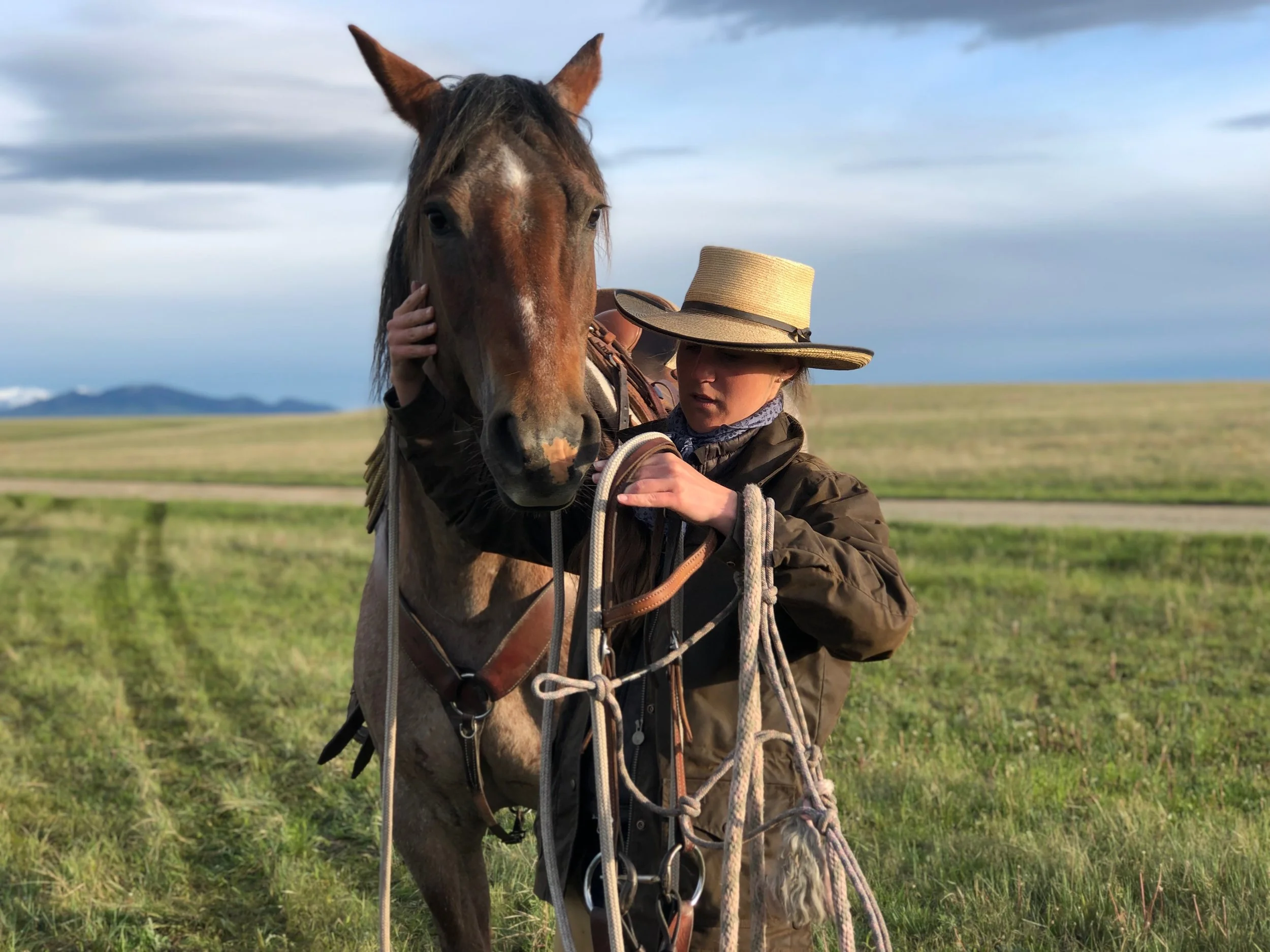Continuing Education & Branding
During the first week of June in addition to livestock monitoring, I attended a soil science workshop by Nicole Masters and a small, speaking event called “The Future West”. It is important to recognize that the scalar difference between these two events aides in representing the scope and scale of what may be tackled when devising ranch management strategies that result in what I refer to as “resilient ranchlands.” The soil science workshop occurred at Barney Creek Livestock which is just south of Livingston. Nicole talked about the ability of ranchlands to have an active role in carbon sequestration, the use of soil science to tackle cheatgrass and erosion, and the ability of ranches to have more successful grazing pastures as a result of a fungi/bacteria balance in the soil. The Future West conference, by contrast, focused on sustaining larger ecosystems in the west and included speakers that have observed and tackled human-wildlife interactions from a variety of perspectives including the mayor of Canmore (Canada), an ethnographer from the Nez Perce nation, a scientist from Yellowstone to Yukon, and a rancher from the Blackfoot Challenge.
Livestock
At the end of this upcoming week cattle will be moved to forestry permits from the lower pastures. Last week was a combination of warm summer days…and the return of winter one morning with 6 inches of snow on the ground. Elk calves are now in the same meadows as the cattle, herds with direct habitat overlap space are more closely observed due to elk calves serving as one of the primary food items during springtime. Earlier this spring, I wrote a research paper on bear mortalities within the Greater Yellowstone Ecosystem using records from the Interagency Grizzly Bear Study Team (IGBST). I believe that one function range riders may serve is working with what we know about behavioral ecology of nutrition, diet and food acquisition habits of species such as grizzly bears to reduce depredation events.
Grizzly bears have a high spatiotemporal variation of diet. The grizzly bear’s “seasons” can be defined by the availability, or concentration, of specific food sources. In a study conducted by Gunther, et al. (2004), the grizzly bear’s seasons were characterized by the following diet and behavioral attributes:
I believe this information is important because over 80% of the grizzly bear mortalities within the Greater Yellowstone Ecosystem over the last ten years have occurred related to human-wildlife conflict. Though bear mortality numbers were not as high as elk hunting season related and anthropogenic food/residential access, livestock depredation events did contribute to management removal decisions. The below graph is a result of some of the work I have done and contrary to the two highest contributors to bear mortality, livestock depredation related bear mortalities were not highest during late hyperphagia. Since I am able to view these data results through the perspective of not only a scientist but also as someone that has spent many years working for ranches throughout the Greater Yellowstone Ecosystem, the temporal pattern of bear mortalities related to livestock depredation were not surprising. In the springtime, cattle calves and elk calves have spatial overlap at times and during early hyperphagia, cattle are often in higher elevation pastures, chasing the green wave and the furthest out they may graze from the home ranch before gather occurs for fall works.
Interagency Grizzly Bear Study Team’s records of bear mortalities within the Greater Yellowstone Ecosystem showed this pattern when I sorted the depredation-related mortality records by bear season.
While range riders survey for evidence of livestock depredation from bears or wolves, monitoring a herd’s overall health is equally important. Factors such as a thinly spread herd across a large area of landscape, a calves weak from scours or cows battling hoof rot all influence the vulnerability of a herd to depredation events. I recognize that some supporters of range riding efforts may have never attended a branding and may not know what occurs at one besides the branding itself but it is also a time for vaccinations and doctoring problems such as abscesses, new scours that may have appeared since the last check on the herd. Have any range-riding related questions? Feel free to send them in at TomMinerRangeRider@gmail.com.
-Sabrina Bradford, Tom Miner Range Rider



